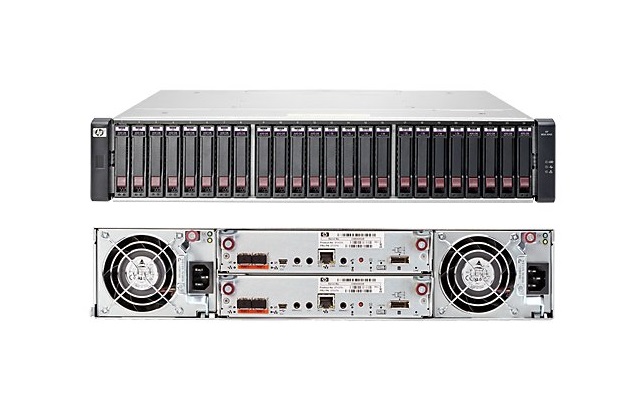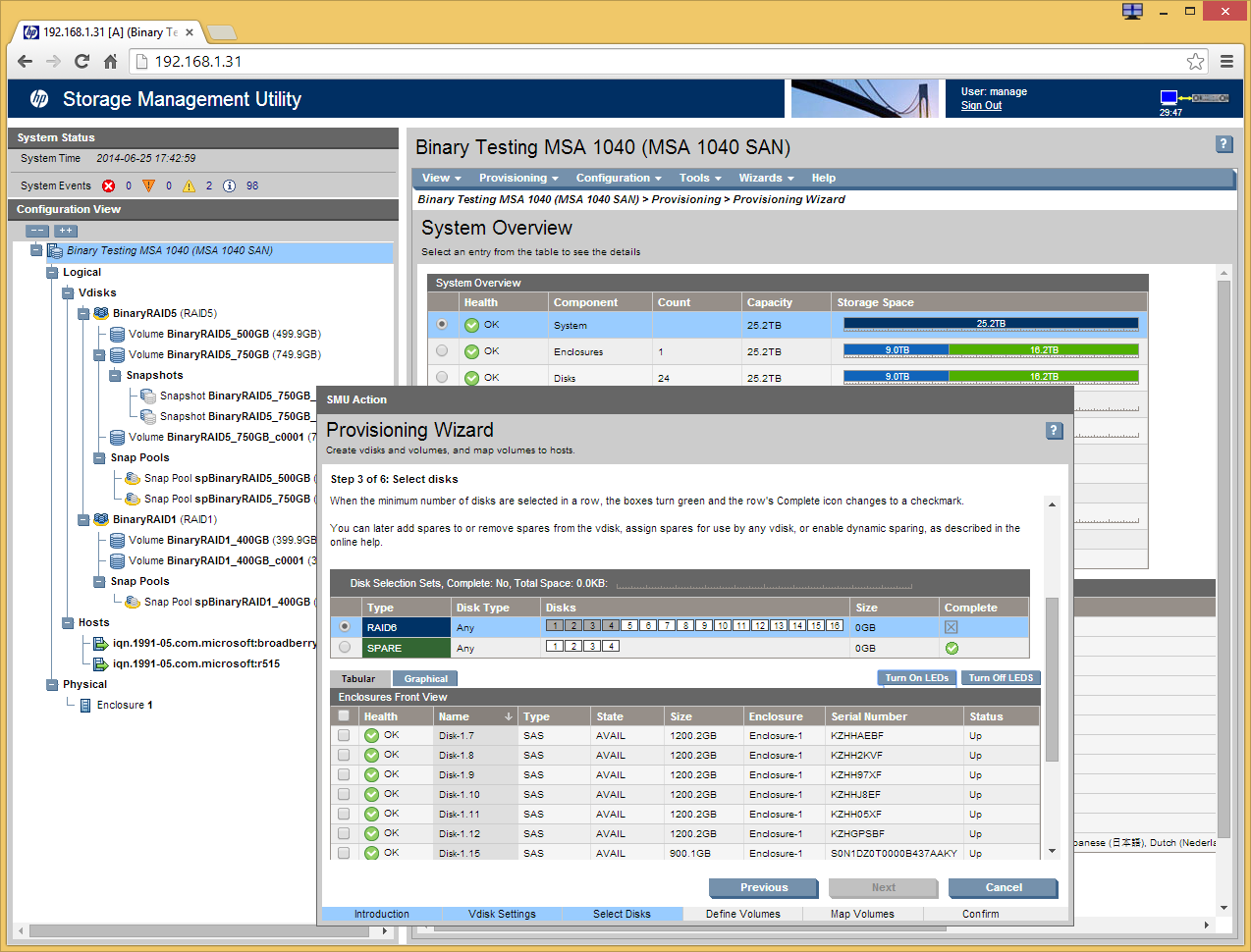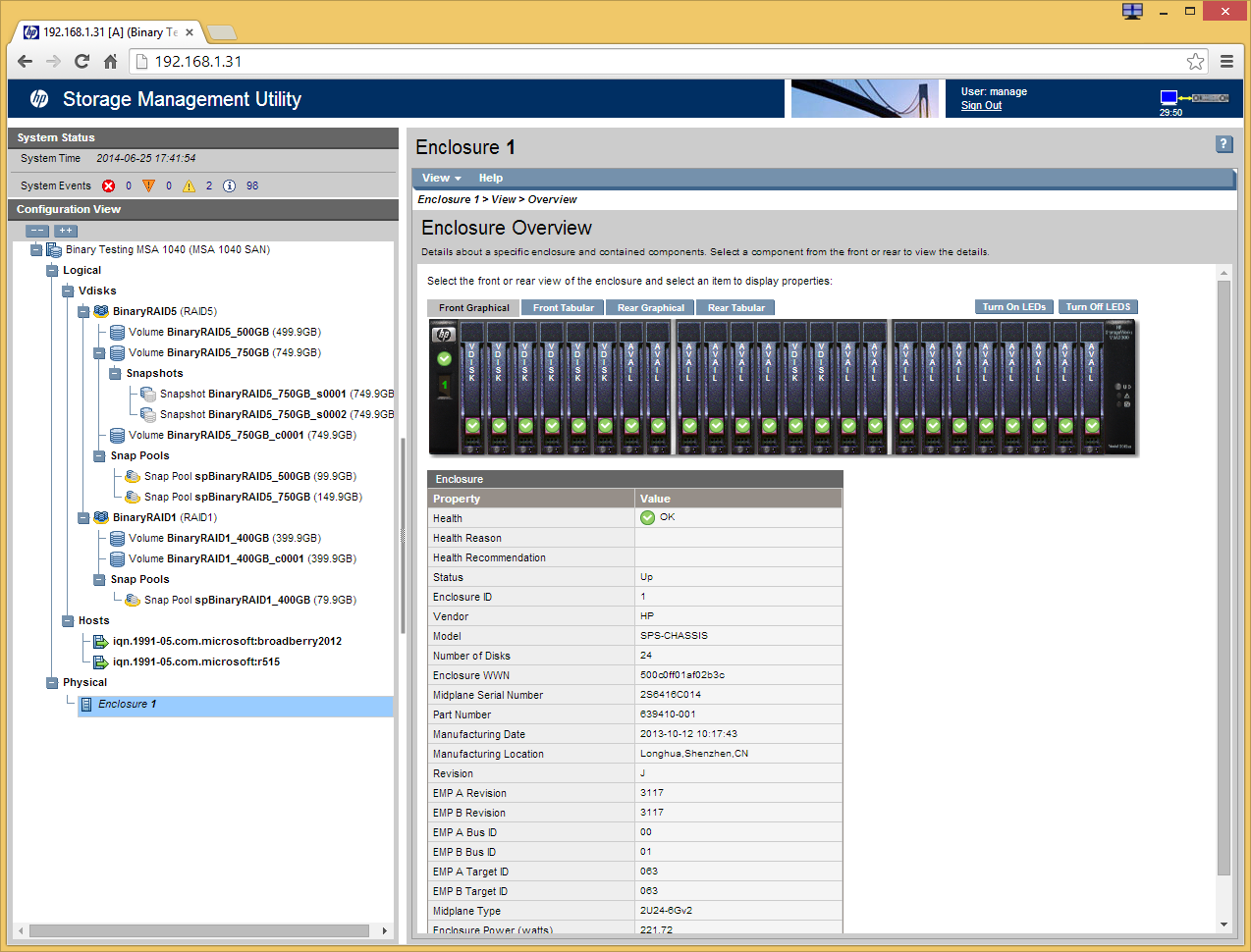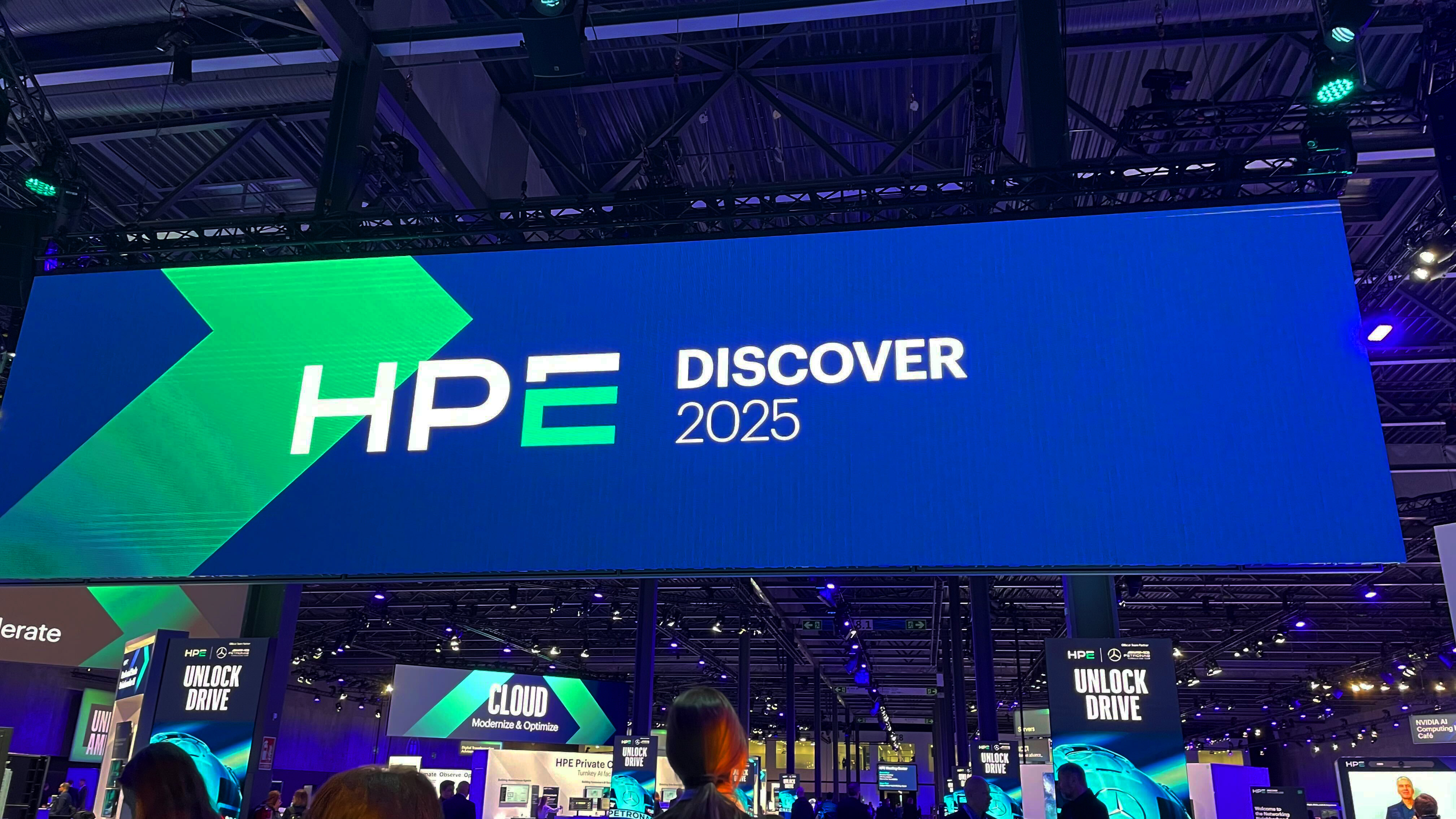HP MSA 1040 Storage review
HP’s new MSA 1040 storage array offers SMBs two RAID controllers for the price of one


A quality IP SAN storage array with dual controller redundancy at a price SMBs will like a lot. The MSA 1040 Storage is simple to deploy, IP SAN performance over 10GbE is good and it can be easily upgraded to keep in step with demand.
-
+
Excellent value; Dual RAID controllers as standard; Good performance; Big expansion potential
-
-
Noisy cooling fans

HP's latest MSA 1040 Storage appliances have a price most of the competition will be hard pressed to match let alone beat. In fact, the cost is so low, HP is effectively giving you a second RAID controller for free.
The MSA 1040 Storage family has a broad reach as it supports IP or FC SANs and HP has models with controllers offering dual 10GbE, Gigabit or 8Gbps FC ports. The system we're reviewing (Model:E7W04A) is supplied as standard with two controllers both sporting dual 10GbE SFP ports.
The controllers run in active/active mode so all ports are available for use. Each has 4GB of cache memory and uses a super-capacitor and CompactFlash card to protect its contents in the event of a blackout.
Along with the 24 SFF bay model on review, the 2U chassis is also available with 12 LFF hot-swap bays. There's a choice selection of hard disks as HP's menu includes 6Gbps SAS2 and SSDs plus midline SAS drives.

Redundancy and expansion
Hardware redundancy is present and correct as the array has two hot-plug PSUs with integral (and very noisy) cooling fans. Each controller has its own management port and IP address so if you lose one you can still manage the entire array from the other.
Capacity can be expanded as each controller has a 6Gbps SAS interconnect port. The MSA 1040 supports up to three MSA 2040 12-bay LFF shelves or three D3700 24-bay SFF shelves and for the latter it can handle up to 99 drives.
Sign up today and you will receive a free copy of our Future Focus 2025 report - the leading guidance on AI, cybersecurity and other IT challenges as per 700+ senior executives
Fault tolerance is extended to the expansion shelves as you link them to the SAS ports on both controllers.
When you feel the need for more speed and expansion you can upgrade the controllers as the 1040 accepts those from the faster MSA 2040 Storage appliances.

The well-designed interface makes it easy to keep track of all your drives, vdisks and snapshots.
Installation and vdisks
You're getting plenty of features for your money as along with support for all the usual RAID suspects, the base price includes a 64 volume snapshot license which can be upgraded to 512. Value looks even better as volume copying comes as standard and not as an extra.
Installation in the lab was swift as we pointed a web browser at the primary controller's management address and were greeted with a tidy and intuitive interface. It's easy to keep track of everything as the console provides a graphical view of all physical array hardware.
Storage provisioning is a cinch as you create vdisks (virtual disks) by selecting drives, choosing a
RAID type and adding hot-spares if you wish. If a vdisk becomes full you can expand it into spare drives across multiple shelves but you can't migrate to a different type of array.
Volumes are created within vdisks and you can enable snapshots during this phase and apply a policy as well. The volume is then mapped to a LUN with read or read/write access and host mapping is simply a case of checking the tick boxes next to the relevant ports on the graphic below. If you need to restrict access to specific hosts you can also use explicit mappings so only they can see the LUN.
Snapshots can be created on-demand or scheduled and the base 64 snapshots can be upgraded to 512
Performance, snapshots and clones
For testing we used a Broadberry Data Systems rack server with dual 2.6GHz E5-2670 Xeons, 48GB of DDR3, Windows Server 2012 R2 and a dual-port Emulex OCE11102-NM 10GbE adapter. We created a RAID-5 vdisk from six 1.2TB 10K SAS 2 drives and mapped a 750GB volume to the server over a direct fibre connection.
Raw performance is good with Iometer configured with 256KB transfer requests reporting sequential read and write speeds of 1030MB/sec and 677MB/sec. Using 8KB transfer requests for sequential read operations, we saw around 8,500 IOPS. Real world speeds are nothing to sniff at either with drag and drop copies of the 50GB Iometer test file returning sustained read and write speeds of 363MB/sec and 298MB/sec.
Volume snapshots can be run manually or to a schedule as often as every minute and are stored in a separate pool on the array. Rollback is a simple process where you select the volume and desired snapshot and leave the appliance to restore the data.
Copying, or cloning, volumes is just as easy as you choose your volume and select the copy option from the drop-down menu and run them on-demand or at regular intervals. Copies will be handy for backup and recovery or testing and development as they can be presented with a LUN as required to selected host systems.
As the controllers run in active/active mode all their 10GbE ports are available for use
Conclusion
The SMB market is growing faster than in any other network storage sector and HP sets a high standard for others to follow. The MSA 1040 Storage family teams up big expansion plans, high levels of redundancy and good performance with a great price that'll make SMBs on a tight budget sit up and take notice.
Verdict
A quality IP SAN storage array with dual controller redundancy at a price SMBs will like a lot. The MSA 1040 Storage is simple to deploy, IP SAN performance over 10GbE is good and it can be easily upgraded to keep in step with demand.
Dave is an IT consultant and freelance journalist specialising in hands-on reviews of computer networking products covering all market sectors from small businesses to enterprises. Founder of Binary Testing Ltd – the UK’s premier independent network testing laboratory - Dave has over 45 years of experience in the IT industry.
Dave has produced many thousands of in-depth business networking product reviews from his lab which have been reproduced globally. Writing for ITPro and its sister title, PC Pro, he covers all areas of business IT infrastructure, including servers, storage, network security, data protection, cloud, infrastructure and services.
-
 Researchers claim Salt Typhoon masterminds learned their trade at Cisco Network Academy
Researchers claim Salt Typhoon masterminds learned their trade at Cisco Network AcademyNews The Salt Typhoon hacker group has targeted telecoms operators and US National Guard networks in recent years
By Emma Woollacott Published
-
 HPE says unified channel strategy won't force Juniper partners to generalize
HPE says unified channel strategy won't force Juniper partners to generalizeNews Does the company embrace specialists or want a full portfolio push? The answer, it seems, is both
By Jane McCallion Published
-
 Google DeepMind partners with UK government to boost AI research
Google DeepMind partners with UK government to boost AI researchNews The deal includes the development of a new AI research lab, as well as access to tools to improve government efficiency
By Emma Woollacott Published
